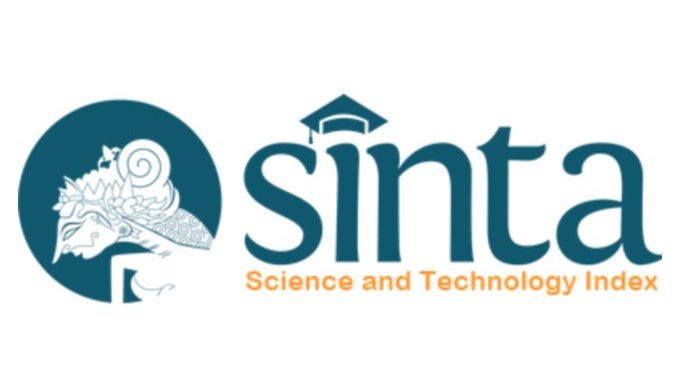Tata Laksana Sindrom Koroner Akut dengan Elevasi Segmen ST Sadapan aVR di Rumah Sakit dengan Fasilitas Terbatas
Laporan Kasus
DOI:
https://doi.org/10.55175/cdk.v51i6.934Kata Kunci:
aVR, elevasi segmen-ST, sindrom koroner akutAbstrak
Analisis sadapan aVR pada elektrokardiografi (EKG) sering kurang diperhatikan, padahal elevasi segmen-ST pada sadapan aVR dan depresi segmen-ST difus pada sadapan lain menandakan iskemia subendokardial sirkumferensial yang dapat disebabkan oleh oklusi left main coronary artery (LMCA) atau three-vessel coronary artery disease (3VD), dan berkaitan dengan prognosis lebih buruk. Seorang pria berusia 83 tahun datang dengan keluhan nyeri dada sejak 18 jam sebelum masuk rumah sakit. Hasil EKG menunjukkan elevasi segmen-ST sadapan aVR disertai depresi segmen-ST difus sadapan anteroinferolateral. Diagnosis pasien adalah sindrom koroner akut (SKA) suspek oklusi left main coronary artery (LMCA) dengan diagnosis banding three-vessel coronary artery disease (3VD). Pemeriksaan penanda fungsi jantung tidak tersedia di rumah sakit, dan fasilitas kateterisasi jantung juga belum tersedia. Terapi dosis awal diberikan aspirin dan clopidogrel. Selama perawatan di rumah sakit, evaluasi EKG menunjukkan perbaikan elevasi segmen-ST sadapan aVR. Pengenalan dini SKA dengan elevasi segmen-ST sadapan aVR dan tata laksana awal segera sangat penting.
Unduhan
Referensi
Ibanez B, James S, Agewall S, Antunes MJ, Bucciarelli-Ducci C, Bueno H, et al. 2017 ESC guidelines for the management of acute myocardial infarction in patients presenting with ST-segment elevation: The task force for the management of acute myocardial infarction in patients presenting with ST-segment elevation of the European Society of Cardiology (ESC). Eur Heart J. 2018;39(2):119-77.
Ralapanawa U, Sivakanesan R. Epidemiology and the magnitude of coronary artery disease and acute coronary syndrome: A narrative review. J Epidemiol Glob Health 2021;11(2):169-77.
Collet JP, Thiele H, Barbato E, Barthelemy O, Bauersachs J, Bhatt DL, et al. 2020 ESC guidelines for the management of acute coronary syndromes in patients presenting without persistent ST-segment elevation. Eur Heart J. 2021;42(14):1289-367.
Kalra S, Kishor K. Anginal equivalents: As simple as ABCDE. J Pak Med Assoc. 2019;69(5):747-8.
Kossaify A. ST segment elevation in aVR: Clinical significance in acute coronary syndrome. Clin Med Insights Case Rep. 2013;6:41-5.
Kabra R, Acharya S, Kamat S, Kumar S. ST-segment elevation in lead aVR with global ST-segment depression: Never neglect left main coronary artery (LMCA) occlusion. Cureus 2022;14(7):e26522.
Wang A, Singh V, Duan Y, Su X, Su H, Zhang M, et al. Prognostic implications of ST-segment elevation in lead aVR in patients with acute coronary syndrome: A meta-analysis. Ann Noninvasive Electrocardiol. 2021;26(1):e12811.
Baviera M, Genovese S, Colacioppo P, Cosentino N, Foresta A, Tettamanti M, et al. Diabetes mellitus duration and mortality in patients hospitalized with acute myocardial infarction. Cardiovasc Diabetol. 2022;21(1):223.
Saluveer O, Redfors B, Angeras O, Dworeck C, Haraldsson I, Ljungman C, et al. Hypertension is associated with increased mortality in patients with ischaemic heart disease after revascularization with percutaneous coronary intervention - a report from SCAAR. Blood Press. 2017;26(3):166-73.
Amsterdam EA, Wenger NK, Brindis RG, Casey DE, Jr., Ganiats TG, Holmes DR, Jr., et al. 2014 AHA/ACC guideline for the management of patients with non-ST-elevation acute coronary syndromes: A report of the American College of Cardiology/American Heart Association task force on practice guidelines. J Am Coll Cardiol. 2014;64(24):e139-e228.
Lee JW, Moon JS, Kang DR, Lee SJ, Son JW, Youn YJ, et al. Clinical impact of atypical chest pain and diabetes mellitus in patients with acute myocardial infarction from prospective KAMIR-NIH registry. J Clin Med. 2020;9(2):505.
Affangla DA, Kandem AW, Mboup WN, Ba DM, Ka MM, Diop CMB, et al. Acute coronary syndrome with persistent ST segment elevation isolated in aVR: A case study. World Journal of Cardiovascular Diseases 2020;10(02):67-71.
Gibbs MA, Leedekerken JB, Littmann L. Evolution of our understanding of the aVR sign. Journal of Electrocardiology 2019;56:121-4.
Harhash AA, Huang JJ, Reddy S, Natarajan B, Balakrishnan M, Shetty R, et al. aVR ST segment elevation: Acute STEMI or not? Incidence of an acute coronary occlusion. Am J Med. 2019;132(5):622-30.
O’Gara PT, Kushner FG, Ascheim DD, Casey DE, Jr., Chung MK, de Lemos JA, et al. 2013 ACCF/AHA guideline for the management of ST-elevation myocardial infarction: A report of the American College of Cardiology Foundation/American Heart Association task force on practice guidelines. Circulation 2013;127(4):e362-425.
Unduhan
Diterbitkan
Cara Mengutip
Terbitan
Bagian
Lisensi
Hak Cipta (c) 2024 David Kristianus, Yuliana Rias Mayasari, Leona Friyanti Ngadiah

Artikel ini berlisensi Creative Commons Attribution-NonCommercial 4.0 International License.





















